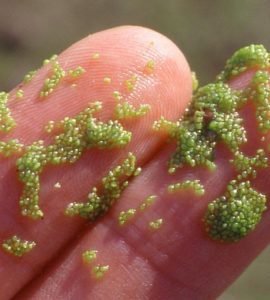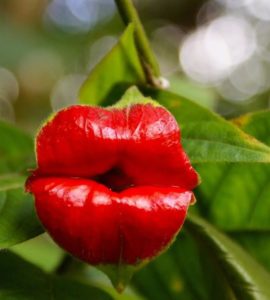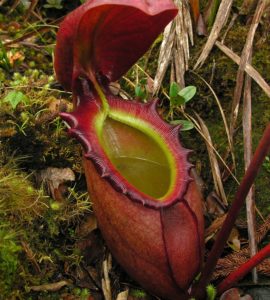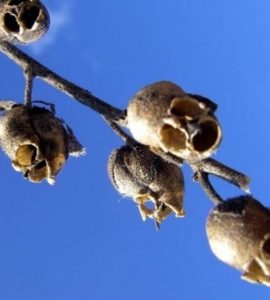The broad concept of flowers hides much more unusual and even amazing than we can imagine: the wild nature is full of amazing exotic plants that no online flower shop can boast. In this collection we will tell you about the most unusual and unique specimens of flora that can be found in the most remote corners of the planet.
Wolffia is considered the smallest flower in the world: it is a rootless flowering plant, representing balls up to 1 mm in size, which lives on the surface of water bodies in Asia, India, Central Europe and the Mediterranean. Each flower has a pistil and a stamen, and this plant can bloom during the summer months.
The largest tropical flower is Amorphophallus titanic, the inflorescence of which reaches one and a half meters in width and two and a half in height. Despite the majestic appearance, people rarely admire them: in addition to the fact that the plant is almost exterminated in the wild, its flowering is limited to only two days, and the smell emanating from the flower resembles a mixture of rotten eggs with rotten fish.
The title of the sexiest plant is the Drakaea glyptodon orchid: its flower copies the body shape of a female tinnid wasp, releasing the same pheromones with which female wasps attract males. This deception is part of the pollination process: the flowering of this orchid coincides with the breeding period of this species of wasps, and males trying to mate with a “female” carry pollen from flower to flower.
The psychotria flower is considered the most romantic. It is also called “hot lips”: the bright inflorescence of this plant really resembles lips folded for a kiss. Psychotria also lives in the tropics: it can be found in the forests of Central and South America.
The most popular carnivorous plant is the sundew: it is often included in the assortment of the flower shop and can be grown at home, although in its natural habitat it prefers swamps, mountains and sandstones, that is, various places teeming with insects. It is insects that are the main food of the sundew: droplets of mucus secreted by its inflorescence become a trap for unwary insects.
Another carnivorous flower feeds not only on insects, but also on small rodents: Nepentes Attenborough grows in the Philippines, and its inflorescence is a jug with a capacity of up to a liter. This jug accumulates sweet nectar, the aroma of which is trapped by rodents and insects.
Plants, the flowers of which are similar to humans, most often belong to orchids: “Darwin’s shoe”, the pleasant phalaenopsis and the tulip orchid actually resemble certain human figures, but most of all similarities with people are found in the orchis and “dancing girls ”. With the latter, everything is clear from the name – their white and light pink inflorescences resemble figures of graceful dancers frozen in a pas.
But the orchis, which is also called the Italian orchid, has another name, not so refined: this plant is known as the gallows orchid. The shape of its inflorescence resembles the silhouette of a naked man. It grows in the Mediterranean in alkaline soils and the beauty of its bloom can be enjoyed from March to May.
How flowers are arranged, we learn from childhood: they have stems, leaves, inflorescences and roots. However, not all plants can boast of roots: for example, atmospheric tillandsia does not need roots or soil for a happy life. Such flowers are called epiphytes, and they are able to survive in any environmental conditions: tillandsia experiences flower delivery without stress, and in the absence of sunlight, its leaves simply remain green, not burgundy.
Epiphytes also include Kadupul, or the Queen of the Night – a very rare plant that blooms only one night in several decades. These flowers live in trees, making them appear to be floating in the air. The queen of the night is so rare that it is considered a great success to see her outside of the photo.
A common snapdragon leaves a human skull-shaped achene after flowering, which looks quite intimidating.
Even burning flowers can be found in nature. These include plants of the ash tree genus: they are also called “gas plant” or “burning bush”. Their characteristic feature is the ability to release volatile essential oils, which, as it were, envelop the inflorescences in an invisible cloud. If you bring a lighted match to their inflorescence on a warm, windless day, you can see how the air around the flower flares up with fire. However, one should be careful with burning bush: inhalation of the essential oils of this flower can burn the mucous membranes of the respiratory tract, and touching it – a chemical burn of the skin.



